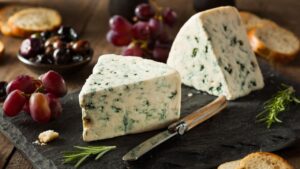If you’ve ever used a recipe that calls for chili flakes or red pepper flakes, you might have wondered if there’s any difference between the two. After all, both are small, red, and commonly used as a way to add heat and flavor to dishes. In this article, we’ll explore the differences between chili flakes and red pepper flakes, including their heat levels, flavor profiles, and common uses in cooking.
What are Chili Flakes and Red Pepper Flakes?
Chili flakes and red pepper flakes are both made from dried, crushed chili peppers. Chili flakes are typically made from cayenne peppers, which are small and thin-walled with a bright red color. Red pepper flakes can be made from a variety of different chili peppers, including cayenne, ancho, or bird’s eye chilies. While both types of flakes have a similar appearance, there are some key differences in their flavor, heat level, and usage.
In terms of flavor, chili flakes are known for their pungent, earthy, and slightly sweet taste. They have a medium heat level that can range from around 30,000 to 50,000 Scoville units, depending on the variety of cayenne pepper used. Red pepper flakes, on the other hand, have a slightly smokier and fruitier flavor, with a higher heat level that can range from around 30,000 to 50,000 Scoville units for cayenne-based flakes, to as high as 100,000 to 150,000 Scoville units for flakes made from bird’s eye chilies.
Both types of flakes are used in cooking as a way to add heat and flavor to dishes. Chili flakes are commonly used in Italian and Mexican cuisine, while red pepper flakes are often used in Asian and Indian cuisine. They can be added to soups, stews, marinades, rubs, and sauces, or sprinkled on top of pizzas, pasta dishes, or roasted vegetables.
Compare Chili Flakes vs Red Pepper Flakes
Heat Levels and Scoville Units
If you’re familiar with chili flakes and red pepper flakes, you might have heard of Scoville units before. Scoville units are a measure of the heat level of a chili pepper or a product made from chili peppers, such as flakes or sauces. The higher the number of Scoville units, the hotter the pepper or product.
Chili flakes and red pepper flakes both contain capsaicin, the compound responsible for their heat. The heat level of a specific type of chili or pepper depends on factors such as its species, variety, growing conditions, and ripeness.
As we mentioned earlier, chili flakes and red pepper flakes can have a heat level that ranges from around 30,000 to 50,000 Scoville units for cayenne-based flakes, to as high as 100,000 to 150,000 Scoville units for flakes made from bird’s eye chilies. While the heat level of both types of flakes can be adjusted depending on the amount used in a recipe, it’s worth noting that red pepper flakes tend to be hotter overall.
Varieties
While chili flakes are typically made from cayenne peppers, there are actually many different varieties of chili peppers that can be used to make flakes. Some of the most popular include ancho, chipotle, and jalapeño peppers.
Ancho pepper flakes are made from dried, smoked poblano peppers that have a sweet, slightly fruity flavor and a mild to medium heat level. They are commonly used in Mexican cuisines, such as in mole sauce or in chili con carne.
Chipotle pepper flakes are made from smoked, dried jalapeño peppers. They have a smoky, earthy flavor and a medium to hot heat level, and are often used in Tex-Mex cuisines, such as in adobo sauce or in chili.
Jalapeño pepper flakes are made from dried, crushed jalapeño peppers. They have a bright, fresh, and slightly tangy flavor, with a medium to hot heat level. They are commonly used in Mexican cuisines, such as in salsas or in fajitas.
Red pepper flakes, as we mentioned earlier, can be made from a variety of different chili peppers. Some of the most popular varieties include cayenne, bird’s eye, and Aleppo peppers.
Bird’s eye pepper flakes are made from dried, crushed bird’s eye chilies, which are small and red with a searing heat level. They are commonly used in Thai, Vietnamese, and Korean cuisine, such as in curry pastes or in kimchi.
Aleppo pepper flakes are made from a type of chili pepper that is native to Syria and Turkey. They have a sweet and fruity flavor, with a medium heat level that is milder than cayenne or bird’s eye peppers. They are often used in Middle Eastern and Mediterranean cuisine, such as in meat rubs or in muhammara dip.
Cooking
Chili flakes and red pepper flakes can be used in a wide variety of dishes and cuisines. Here are some tips for cooking with each type of flake:
- Chili flakes are great for adding moderate heat and a complex flavor to Italian and Mexican dishes. They can be added to tomato sauce, chili, or pizza, or used to spice up roasted vegetables or grilled meats.
- Red pepper flakes are hotter and fruitier than chili flakes and are often used in Asian and Indian cuisine. They can be added to stir-fries, curries, or noodle dishes, or used to season meat or seafood.
- When using either type of flakes, start with a small amount and taste as you go. Remember that you can always add more, but you can’t take away the heat if you add too much!
- If you want to adjust the heat level of a dish, you can use fewer or more flakes depending on your preference. You can also remove the seeds and membranes from the chili peppers before making the flakes, as these contain the highest concentration of capsaicin.
Health Benefits
Chili flakes and red pepper flakes both contain a compound called capsaicin, which is responsible for their heat. Capsaicin has been linked to a number of potential health benefits, including:
- Pain relief: Capsaicin has been shown to have pain-relieving properties, and is often used in topical creams and patches to help manage conditions such as arthritis and nerve pain.
- Improved digestion: Capsaicin can help stimulate the production of digestive enzymes, and may also help reduce inflammation in the digestive tract.
- Weight loss: Capsaicin has been shown to have a thermogenic effect, which means it can help increase metabolism and promote weight loss.
- Reduced inflammation: Capsaicin has anti-inflammatory properties, and may help reduce inflammation throughout the body.
Storing
To keep your chili flakes and red pepper flakes fresh and flavorful, it’s important to store them properly. Here are some tips:
- Store in a cool, dry place: Both types of flakes should be stored in an airtight container in a cool, dry place, away from direct sunlight and moisture.
- Use within a year: While chili flakes and red pepper flakes can last for up to two years if stored properly, their flavor and heat level will start to decline after about a year.
- Consider grinding your own flakes: If you want to ensure the freshest, most flavorful flakes possible, consider buying whole chili peppers and grinding them yourself using a spice grinder or mortar and pestle.
Buying
When it comes to buying chili flakes and red pepper flakes, there are a few things to keep in mind. Here are some tips:
- Read the label: Make sure to check the label to see what type of chili pepper the flakes are made from, as well as their heat level.
- Buy from a reputable source: To ensure that you are getting high-quality, fresh flakes, consider buying from a reputable spice shop or online retailer.
- Consider buying in bulk: If you use chili flakes or red pepper flakes frequently, buying in bulk can be a cost-effective option.
Conclusion
In conclusion, chili flakes and red pepper flakes are two types of dried chili peppers that are commonly used in cooking as a way to add heat and flavor to dishes. While both types of flakes have a similar appearance, they have some key differences in flavor, heat level, and usage.
Chili flakes are typically made from cayenne peppers and have a medium heat level, while red pepper flakes can be made from a variety of chili peppers and have a higher heat level overall. Both types of flakes can be used in a variety of cuisines and dishes, and their heat level can be adjusted depending on the amount used.
Whether you prefer the earthy and slightly sweet taste of chili flakes or the smoky and fruity flavor of red pepper flakes, both types of flakes are a versatile and flavorful addition to any home cook’s spice rack. So why not try experimenting with both and see which one you prefer in your favorite dishes?





